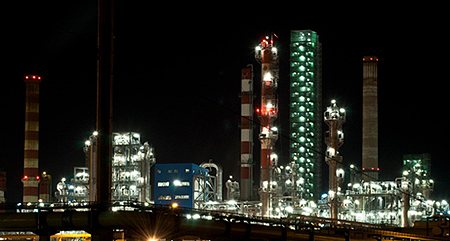SunCoChem Project: Carbon-Neutral production for the European Chemical Industry through innovative Photoelectrocatalytic Reactor Technology.
 Reducing greenhouse gas emissions stands as one of Europe's major challenges in addressing global warming and climate change. Over the years, the European chemical industry has pursued this goal, striving to achieve carbon neutrality by 2030.
Reducing greenhouse gas emissions stands as one of Europe's major challenges in addressing global warming and climate change. Over the years, the European chemical industry has pursued this goal, striving to achieve carbon neutrality by 2030.
As the fourth largest manufacturing industry in Europe, the chemical sector produces around 120 million tons of CO2 annually and heavily relies on carbon feedstock imports for energy and chemical processes, mainly from fossil fuels. Although the industry has been transitioning towards the use of more renewable energies since 1990, there is still a long way to go to reach carbon neutrality.
The achievement of a carbonneutral chemical industry requires a fundamental shift in production methods, while maintaining global competitiveness. Embracing sustainable chemistry and leveraging renewable resources for chemical production presents an opportunity for an efficient use of resources and environmental preservation. This is pivotal for transitioning to a new energy and chemical production paradigm.
A key element of this transition is the solar-driven chemistry which refers to a future chemicals production based on the substitution of fossil feedstock as energy source and raw materials and the utilization of renewable energy sources. This intensification in the transformation from solar to chemical energy is crucial for sustainability.
In this sense, the Horizon 2020 SunCoChem project has been working to offer a sustainable and carbon-neutral alternative for the production of chemicals, utilizing CO2 captured from the chemical industry itself combined with solar energy.
SunCoChem, coordinated by Eurecat Technology Center, is developing a photoelectrocatalytic reactor to synthesize valuable chemical oxoproducts, chemicals manufactured from oxo-chemistry processes, from CO2, H2O, and solar energy. Oxochemistry involves the hydroformylation of olefins by using syngas (H2/CO) to produce essential compounds such as limoxal, valeraldehyde and glycolic acid commonly used in cosmetics and food manufacturing.
What sets SunCoChem's innovation apart is the utilization of a self-biased photo-reactor, ensuring carbon neutrality while pushing the boundaries of sustainable chemical synthesis.
SunCoChem's photoelectrocatalytic device for solar-driven CO2 conversion into green chemicals
The SunCoChem's novel reactor architecture integrates CO2 capture and conversion units, creating a self-sustaining device poised to significantly reduce CO2 emissions. At the same time, it enhances solar energy conversion efficiency for chemical production, avoiding the use of fossil fuels. This reactor has undergone rigorous testing to develop valueadded chemicals for diverse applications, including cosmetics and food.
Chemicals are present in nearly every aspect of modern manufacturing, with applications in a countless number of sectors. SunCoChem's innovation mitigates costs and CO2 emissions, reducing the European chemical industry's dependence on carbon-based raw materials while contributing towards a solar-driven carbon-neutral industry aligned with the commitments agreed at the 2015 United National Climate Change Conference (COP21).
SunCoChem is made up of a consortium of 14 partners from eight European countries, including five technology and research centres; four small and medium-sized enterprises developing advanced materials and technologies; one engineering firm; two chemical corporations and two operational support partners.